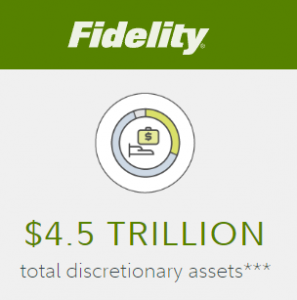Strong collaboration is the second in the top 10 list of top skills required by sourcing professionals. You can read the full Procurement Job Market report here.
As per Hackett group recently published a report regarding “CPO Agenda: Procurement’s Key Issues in 2015”, the top issue in CPO’s mind is achieving the trusted advisor status.
It is very clear that having strong collaboration skills go a long way in increasing the procurement influence and helping CPO’s gain the trusted advisor status.
Why gaining trusted advisor status is a challenge? There are multiple reasons for it
Perception about procurement Department: procurement in most of the companies is seen as a roadblock, a team which slows down the vendor selection process and business speed.
Most of the stakeholders involve procurement not because of the value add but because of the necessity mandated by your Corporate Procurement Policy.
Lack of Domain Knowledge: This scenario is very common in high-tech or Information technology categories. Stakeholders perception is that procurement, does not have domain expertise in their categories, so we are not going to engage them.
I am sure there could be more reasons for not engaging procurement but above two are the most common issues.
Procurement is no different from Sales, with the only difference that your customers are your internal stakeholders. Successful sales professionals know very well how to overcome customer objections, procurement professionals should also hone the skills of overcoming the stakeholders objections so that you can increase collaboration and hence increase procurement Influence.
So let’s look at some ways to Increase Collaboration with stakeholders / Internal customers.
1. Empathy
Understanding your stakeholders’ business function is key to increasing collaboration. Each department in an organization provides a specific function. Some of the things you should know about your stakeholders:
- The core function of the department.
- Their goals for a specific calendar year.
- What are the key challenges they are currently facing.
Here is a good example: Imagine you are trying to engage with a stakeholder for building the savings plan for next year; however, the department is currently working on something mission critical and on top of they are not getting the desired support from the incumbent suppliers.
If you encounter a situation like this, be helpful in getting the issue resolved by working with the supplier/s. The savings plan can wait.
2. Domain Knowledge
Understanding the usage of the product/service being sourced helps a lot. Not only it helps with a better evaluation of the suppliers, stakeholders trust your advice and recommendations because you are adding value to the process and not just finding the vendor with the lowest cost.
This might not be that critical in general commodities but in certain categories like technology sourcing, chemicals sourcing etc., this may go a long way in helping you establish the trusted advisor status.
Spend some time on understanding the category before you engage with your stakeholders on a specific RFP. A quick google search should give you an overview of the category. Again, you don’t need to be an expert but you should understand enough to have an intelligent conversation with the vendors and stakeholders.
3. Procurement is not Only About Savings:
Procurement is widely perceived as a department which is responsible only for reducing cost and savings. Though that is true, but there are other aspects of procurement and sourcing which are equally important if not more important than savings.
Spend some time educating your stakeholders about the key functions and the value of:
- Risk Management: How procurement mitigates risk by establishing contracts and negotiating favorable terms. If nothing else, they will start appreciating why getting a contract signed takes so long after the price is negotiated!.
- Compliance: How procurement helps is managing compliance to corporate controls and ensuring compliance with Corporate Procurement policy.
At least connect with senior management of your stakeholders and present procurement value add.
4. Responsiveness
Being responsive to your stakeholders needs, goes a long way in building rapport with your stakeholders.
Your stakeholders are probably not always reaching to you regarding a new RFP (Request For Proposal) all the time. Sometimes they might have questions about existing contracts like termination clause, price change etc.
Show the same level of responsiveness as you would show to a RFP request. This is another way of showing that Procurement is not all about savings, but supporting the needs of the business. After all, Procurement is a support function like HR and others.
5. Define Clear Goals
Define clear goals and make sure that everyone is on the same page. This could be the goals for an RFP, a re-negotiation with an incumbent supplier or a supplier development program.
Don’t hesitate to ask tough and clear questions. That will allow you to better understand your stakeholders requirements as well as expectations. If the expectations are unrealistic, it is better to do expectations management sooner than later. Not having clear goals leads to delayed timelines and frustrated stakeholders.
6. Deliver on Your Promises
Nothing is more damaging to procurement trusted advisor status than if procurement does not come through on its promises. Whether it is to deliver savings or specific timelines, make sure that you make every possible effort to meet customers/stakeholders expectations.
Before you commit to deliver, make sure goals are realistic. Never commit to something which you can’t deliver. For example, you have been asked to reduce the cost by 20% for a widget when the cost of raw material for that widget has gone up by 10%.
7. Participate in Supplier Reviews
Regular Supplier reviews are important to understand the pulse of supplier relationship and ensuring that Procurement savings are realized.
Help your stakeholders by coordinating the supplier reviews, facilitate the discussion and ensure that fairness is maintained in the relationship.
Ensure that the outcome of supplier reviews is clearly documented. For example, all the action items for both the supplier and your organization. This will only not only help in tracking the status during the next meeting, but also ensure that everyone is on the same page.
Business & Finance Articles on Business 2 Community(114)



